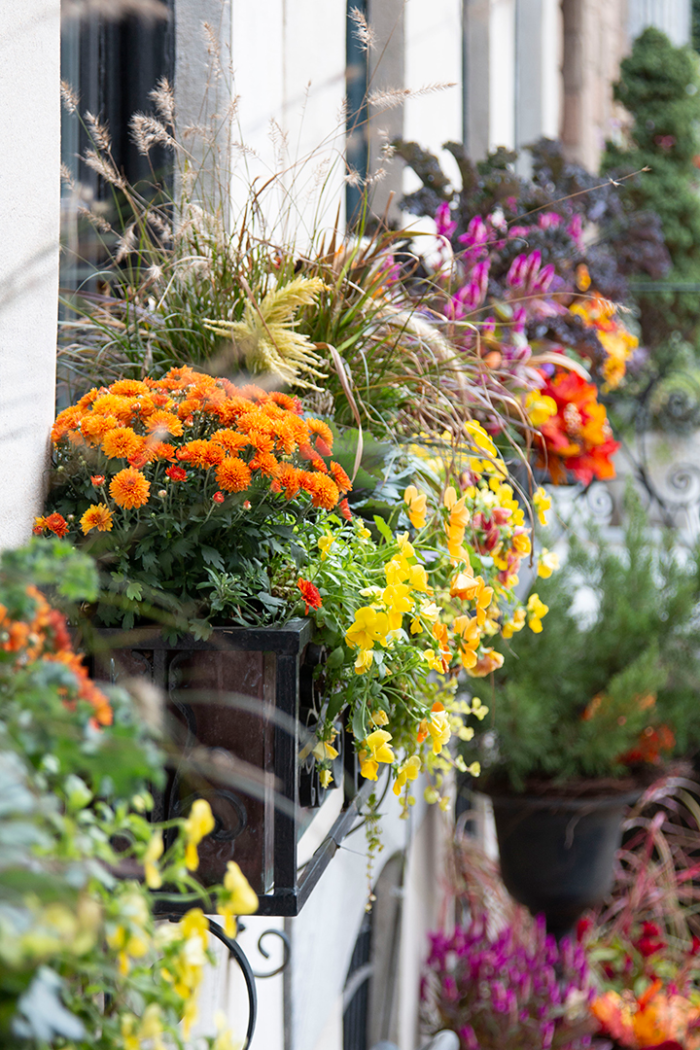
If your container plantings are looking frazzled after this rough summer, you’re not alone. However, our Mid-Atlantic autumn season still has a fair way to go, so don’t give up on your potted plantings too soon. With a little effort, they can look spectacular well into the fall season. For some suggestions, I turned to Paul Kawoczka, co-owner of Enliven Planters, a company well known in the Philadelphia area for its eye-catching seasonal container designs.
Add fresh plants for fall
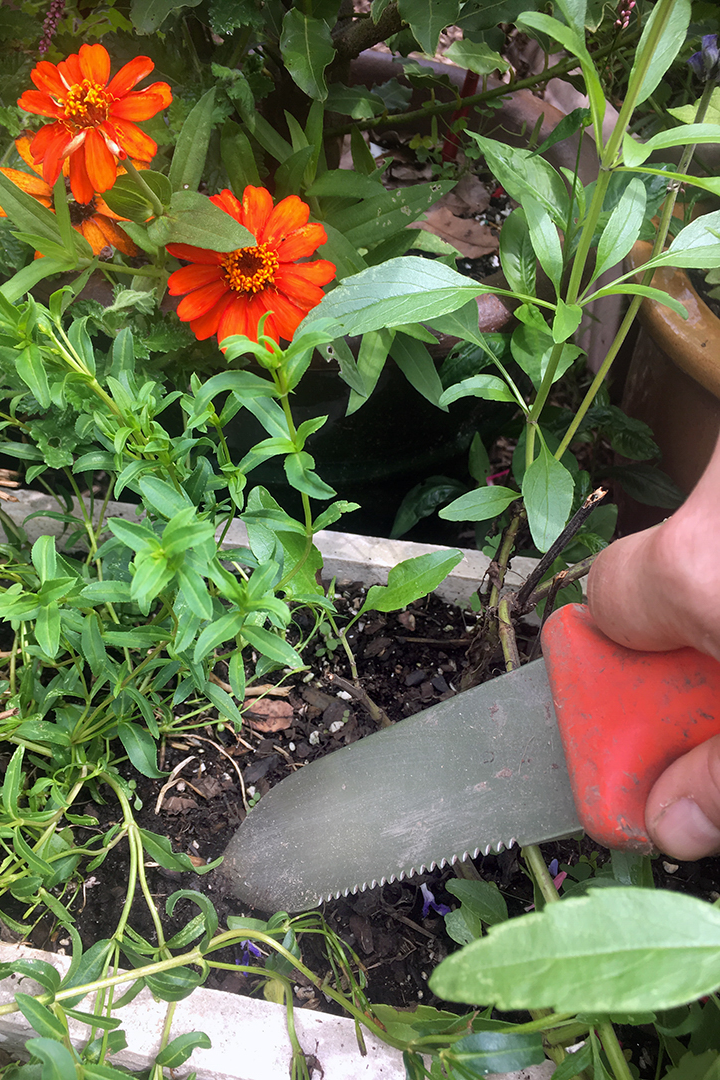
“Rather than doing a complete replanting of your container, you may choose to leave in some elements and edit out others,” advises Paul. First, carefully dig out the plants you want to replace. (Pulling them out can also uproot the plants you want to keep.)
Potted mums (Dendranthema hybrids, Zones 5–9), ornamental peppers (Capsicum spp. and cvs., annual), and celosias (Celosia argentea, Zones 10–11) are easy to find and great for quick color in sunny sites. Need something new for a shady fall container? Paul has found an unexpected alternative: “Instead of mums, we’ve been using blooming kalanchoe (Kalanchoe blossfeldiana, Zones 10–12). The texture mimics mums in bloom but lasts much longer in the shade.” He recommends using fall-added annuals and tender perennials as accents only, though, and “not the main stage,” because their peak bloom time tends to be relatively short, depending on the weather. (The kalanchoe, for instance, is very sensitive to frost.) Instead of splurging on large specimens, which can take up an entire container, he prefers to start with plants sold in 4- to 6-inch pots, tucking them in among the remaining plants for pops of color.
Start over with a new design
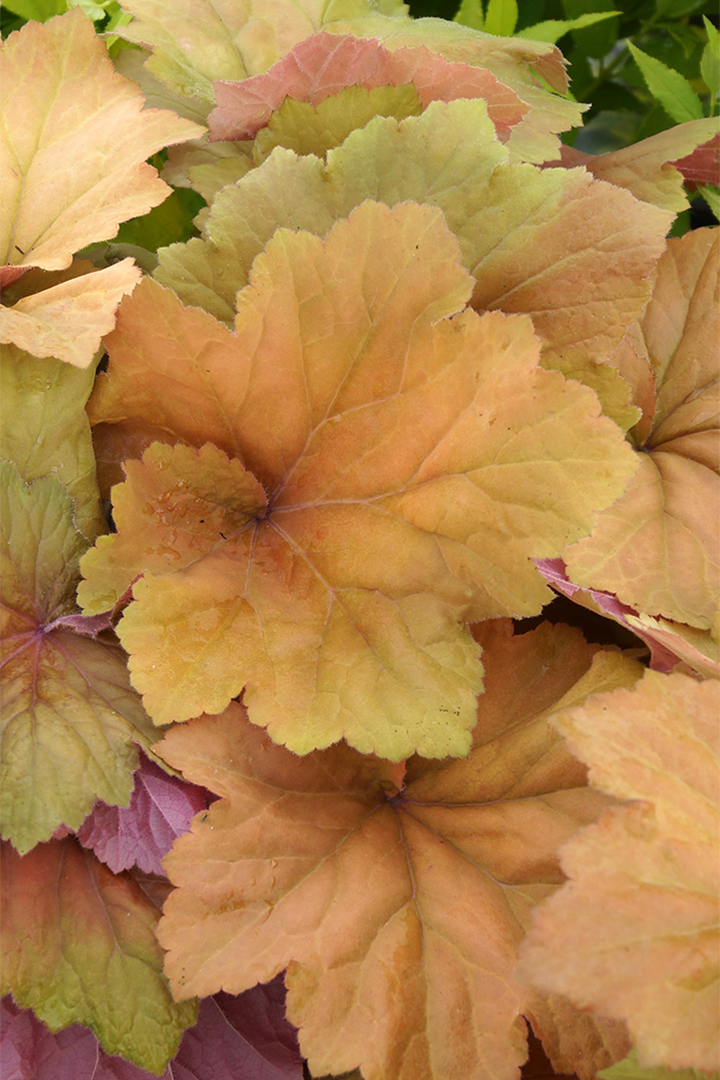
Would you rather pull out everything and start over for the fall season? For the longest-lasting show, concentrate on hardy perennials and young woody plants—particularly those with dramatic colors and textures. “I love using foliage that changes as the seasons turn, mimicking the fall trees,” says Paul. “’Fire Power’ heavenly bamboo (Nandina domestica ‘Fire Power’, Zones 6–9) is a great example. As the season stretches from September to November, watch the leaves turn from lime green to bright fiery orange and red.”
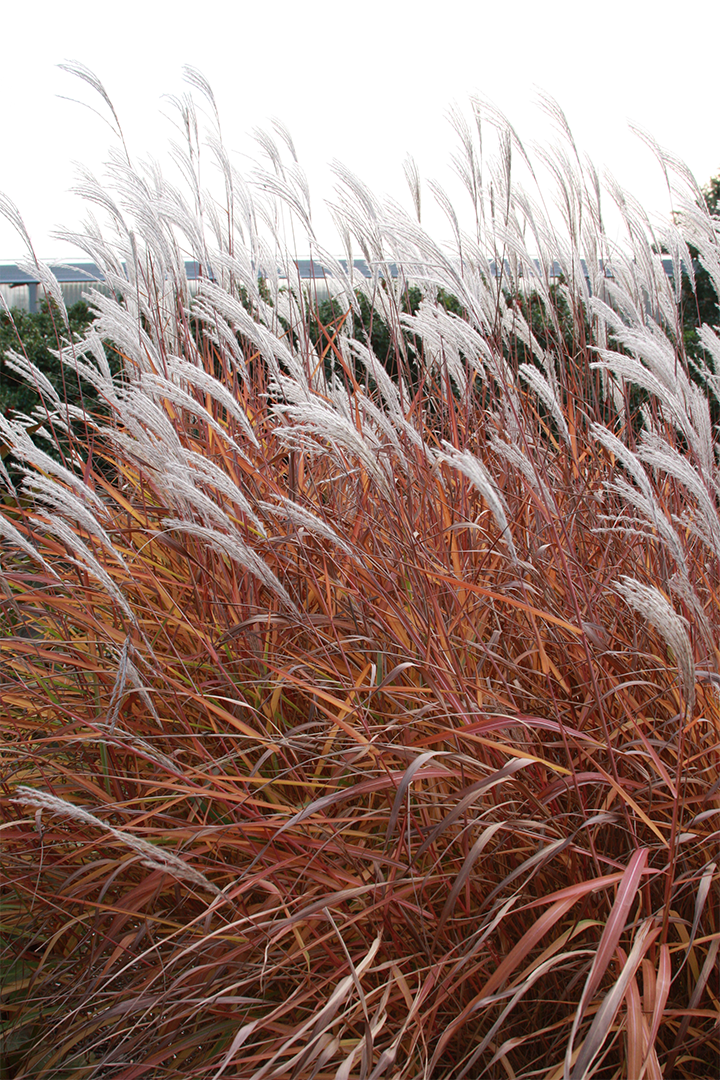
Grasses are a key element in Mid-Atlantic autumn landscapes, and they’re excellent in containers too. “You can never use too many grassy textures in the fall,” assures Paul. “Miscanthus (Miscanthus sinensis, Zones 4–9) keeps its form even when dormant and has a coppery hue. ‘Bronco’ hair sedge (Carex comans ‘Bronco’, Zones 6–10) is another favorite of mine. It has a natural bronzy-brown color and a floppy, full form that can be used at the edge of a container or window box as a trailing element.”
Whichever plants you choose for your all-new fall display, Paul says, “Keep in mind that your fall arrangement will likely not grow much once planted. Really pack the plants tight in your container for best results.” With good care (remember that fall containers still need regular watering during dry spells), your autumn arrangements will continue to grace your garden for weeks or even months to come.
Nancy J. Ondra is the author of over fifteen books, including Grasses, The Perennial Care Manual, and The Perennial Matchmaker.
More fall containers:
Containers That Keep Kicking Into Fall
Fine Gardening Recommended Products

A.M. Leonard Deluxe Soil Knife & Leather Sheath Combo
Fine Gardening receives a commission for items purchased through links on this site, including Amazon Associates and other affiliate advertising programs.

Johnny’s Selected Seeds Connecta® Cultivation Kit
Fine Gardening receives a commission for items purchased through links on this site, including Amazon Associates and other affiliate advertising programs.

Nesco Snackmaster Express Food Dehydrator
Fine Gardening receives a commission for items purchased through links on this site, including Amazon Associates and other affiliate advertising programs.




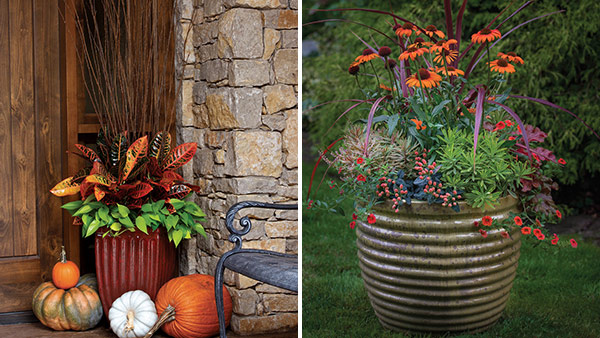














Comments
Log in or create an account to post a comment.
Sign up Log in